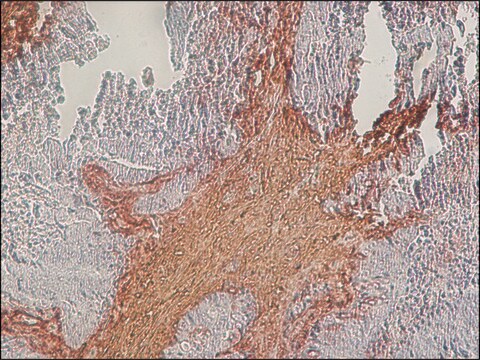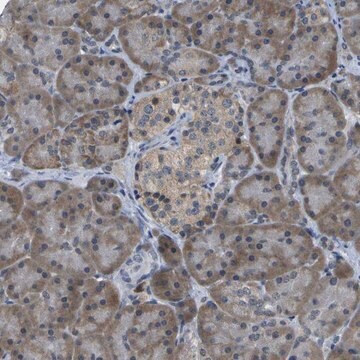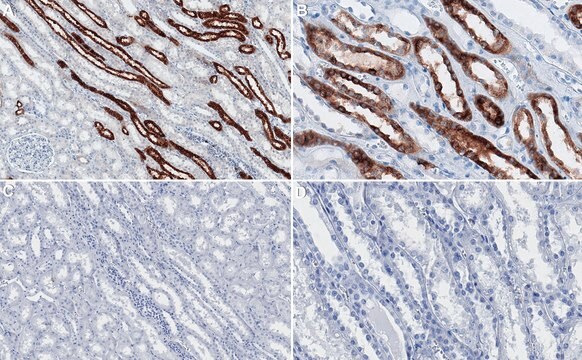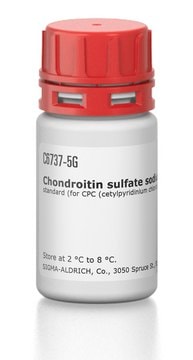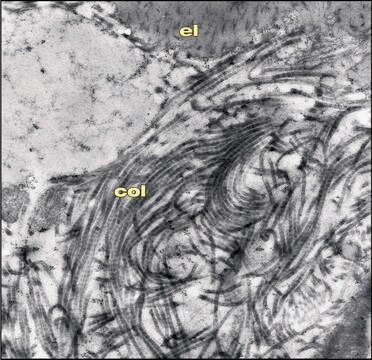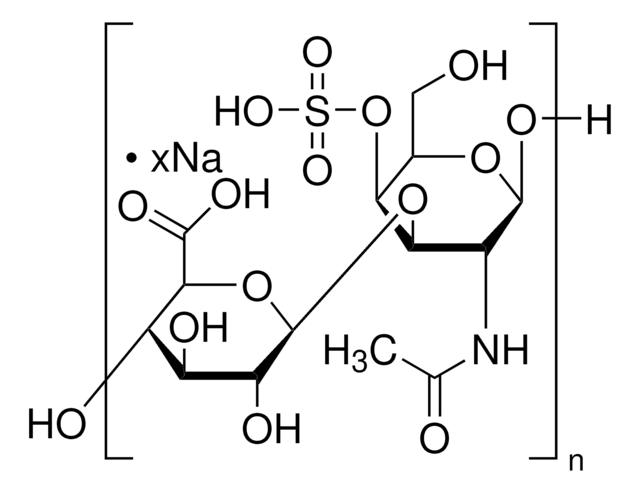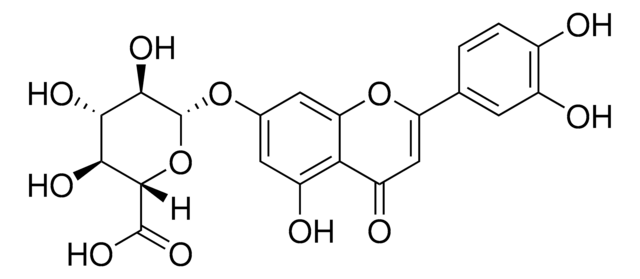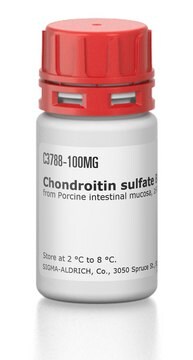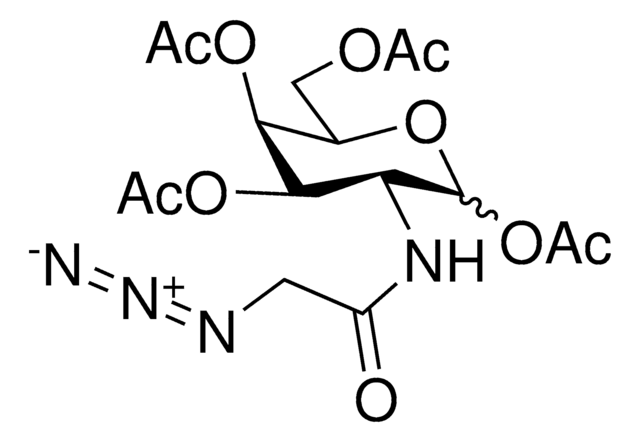MABT1324
Anti-Keratan sulfate Antibody, clone 373E1
Synonyme(s) :
KS, Keratosulfate
About This Item
Produits recommandés
Source biologique
mouse
Niveau de qualité
Forme d'anticorps
purified antibody
Type de produit anticorps
primary antibodies
Clone
373E1, monoclonal
Poids mol.
observed mol wt ~N/A kDa
Produit purifié par
affinity chromatography
Espèces réactives
chicken, human
Réactivité de l'espèce (prédite par homologie)
vertebrates
Conditionnement
antibody small pack of 100
Technique(s)
ELISA: suitable
immunohistochemistry: suitable
immunoprecipitation (IP): suitable
western blot: suitable
Isotype
IgMκ
Numéro d'accès Protein ID
Numéro d'accès UniProt
Température de stockage
-10 to -25°C
Catégories apparentées
Spécificité
Immunogène
Application
Evaluated by Immunohistochemistry (Paraffin) in Human cartilage tissue sections.
Immunohistochemistry (Paraffin) Analysis: A 1:50 dilution of this antibody detected Keratan Sulfate in human cartilage tissue sections.
Tested Applications
Western Blotting Analysis: A representative lot detected Keratan Sulfate in Western Blotting application (Magro, G., et al. (2003). Am J Pathol. 163(1):183-96).
Immunoprecipitation Analysis: A representative lot immunoprecipitated Keratan Sulfate in Immunoprecipitation application (Magro, G., et al. (2003). Am J Pathol. 163(1):183-96).
Immunohistochemistry Applications: A representative lot detected Keratan Sulfate in Immunohistochemistry application (Magro, G., et al. (2003). Am J Pathol. 163(1):183-96).
ELISA Analysis: A representative lot detected Keratan Sulfate in ELISA application (Magro, G., et al. (2003). Am J Pathol. 163(1):183-96).
Note: Actual optimal working dilutions must be determined by end user as specimens, and experimental conditions may vary with the end user.
Description de la cible
Forme physique
Reconstitution
Stockage et stabilité
Autres remarques
Clause de non-responsabilité
Vous ne trouvez pas le bon produit ?
Essayez notre Outil de sélection de produits.
Code de la classe de stockage
12 - Non Combustible Liquids
Classe de danger pour l'eau (WGK)
WGK 2
Point d'éclair (°F)
Not applicable
Point d'éclair (°C)
Not applicable
Certificats d'analyse (COA)
Recherchez un Certificats d'analyse (COA) en saisissant le numéro de lot du produit. Les numéros de lot figurent sur l'étiquette du produit après les mots "Lot" ou "Batch".
Déjà en possession de ce produit ?
Retrouvez la documentation relative aux produits que vous avez récemment achetés dans la Bibliothèque de documents.
Notre équipe de scientifiques dispose d'une expérience dans tous les secteurs de la recherche, notamment en sciences de la vie, science des matériaux, synthèse chimique, chromatographie, analyse et dans de nombreux autres domaines..
Contacter notre Service technique